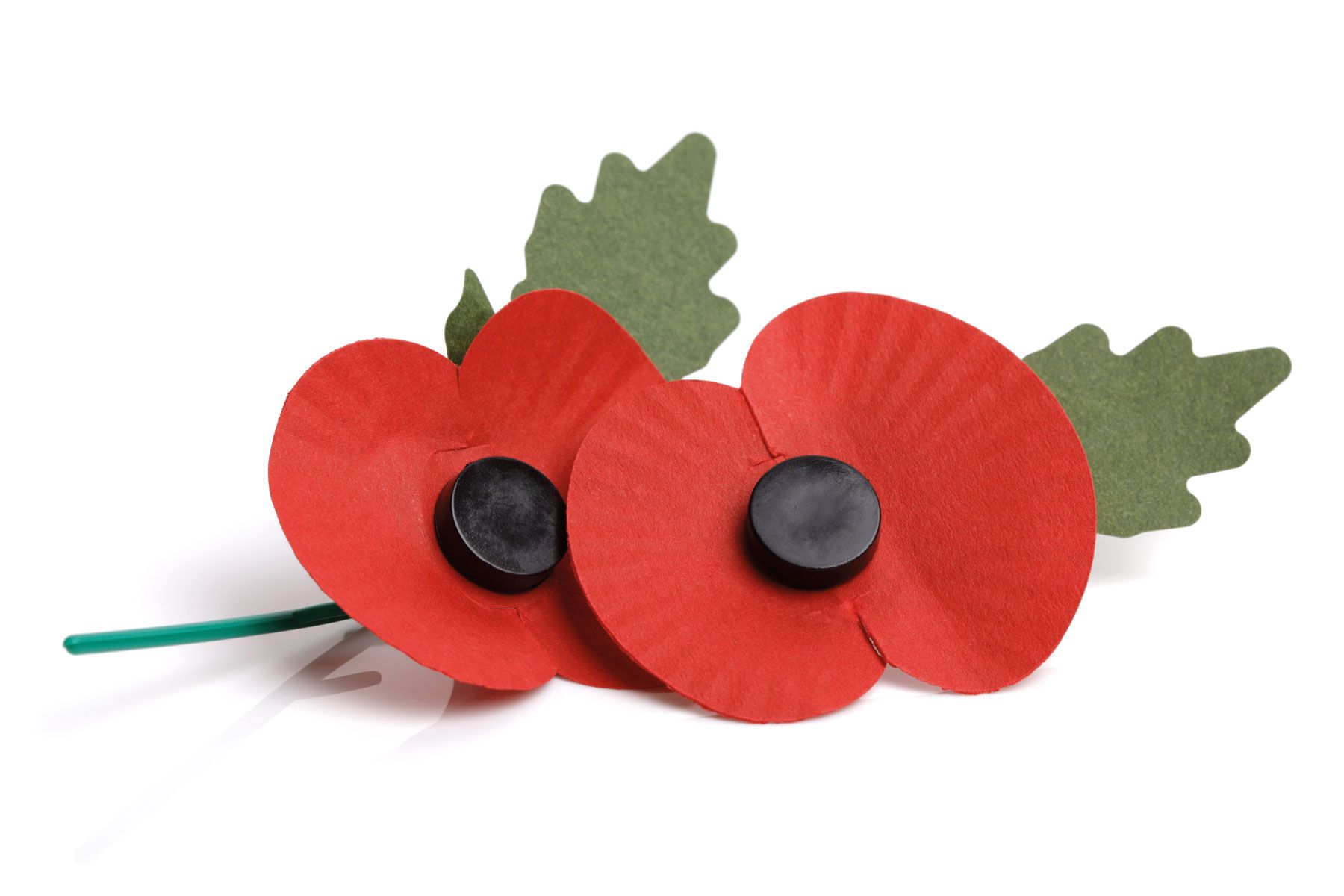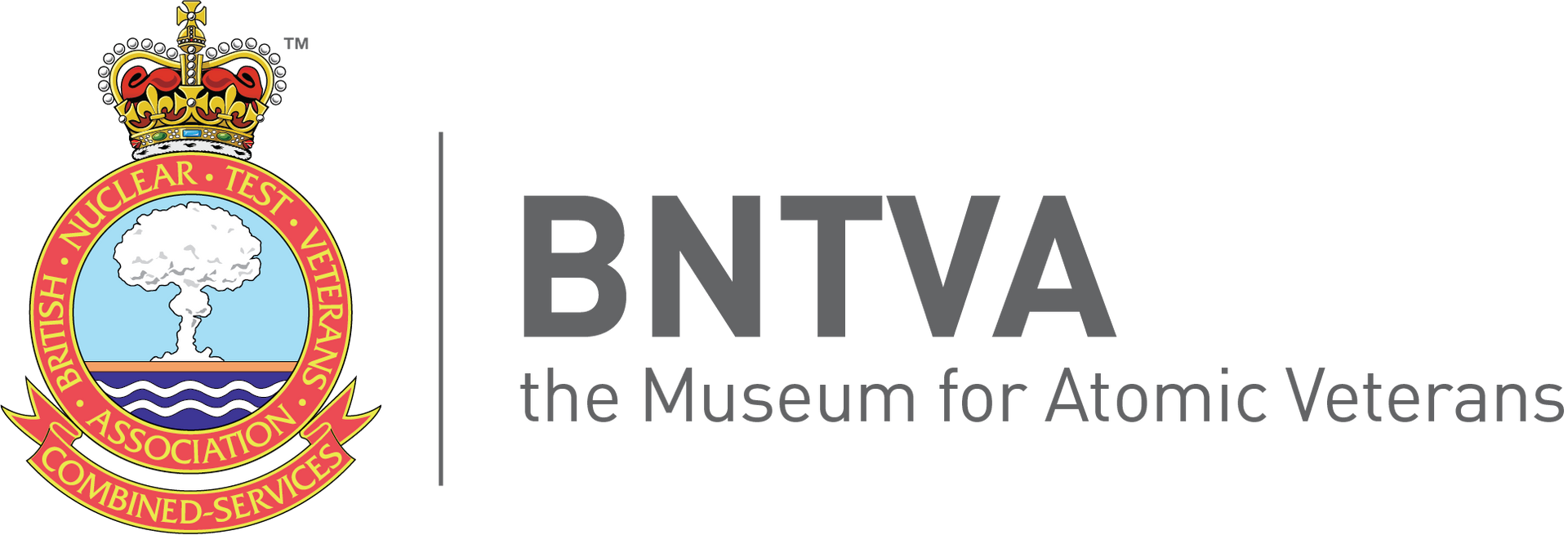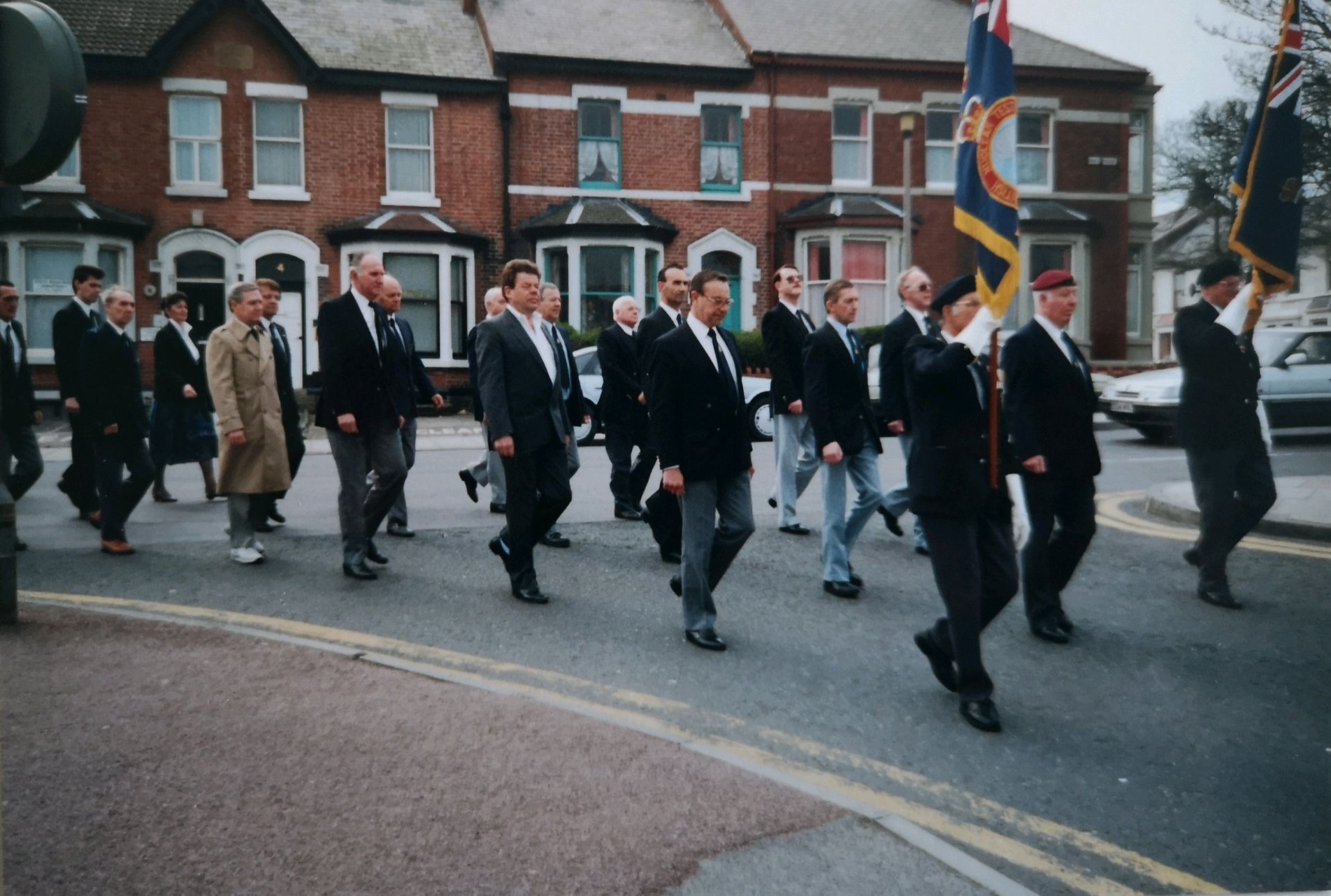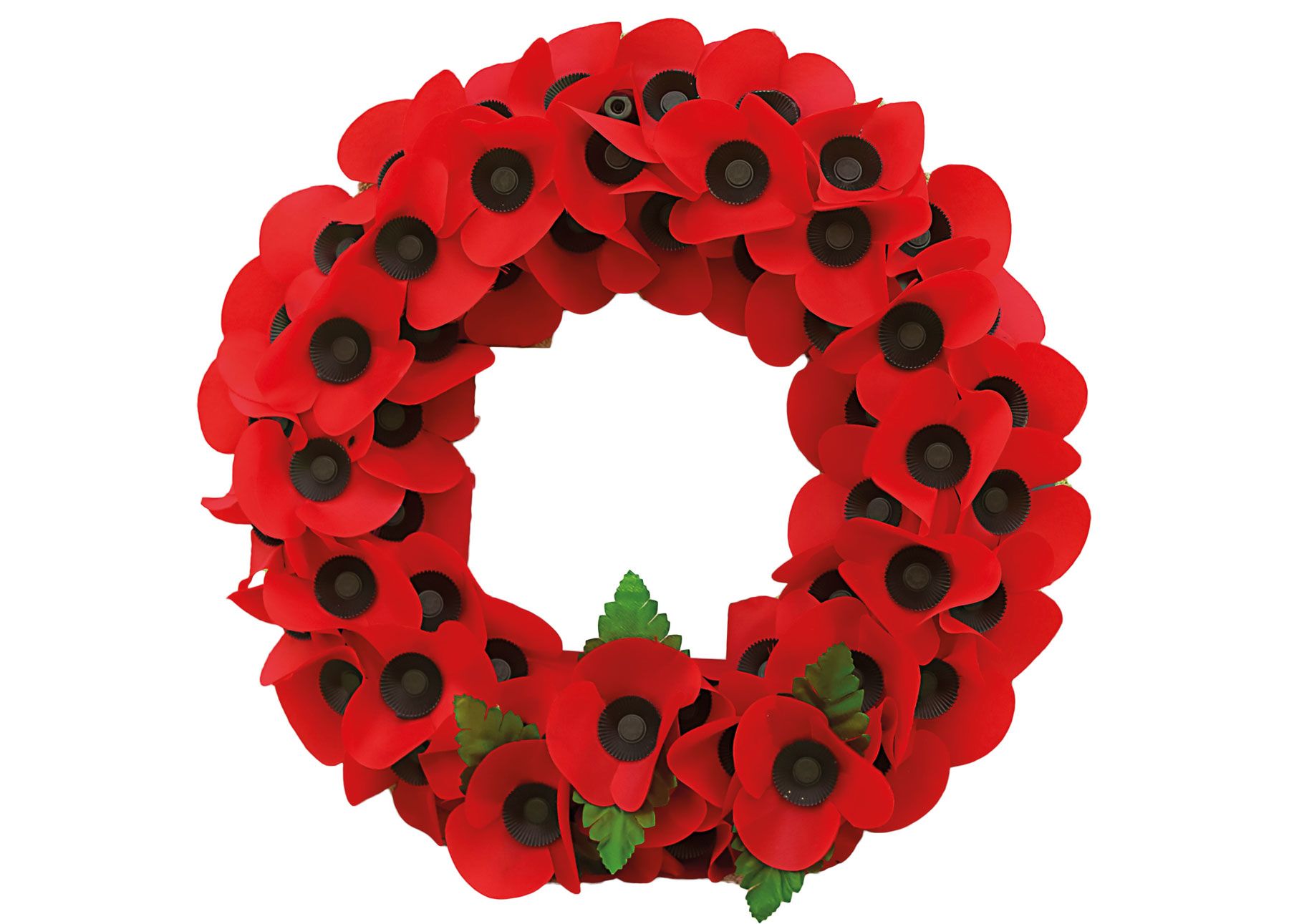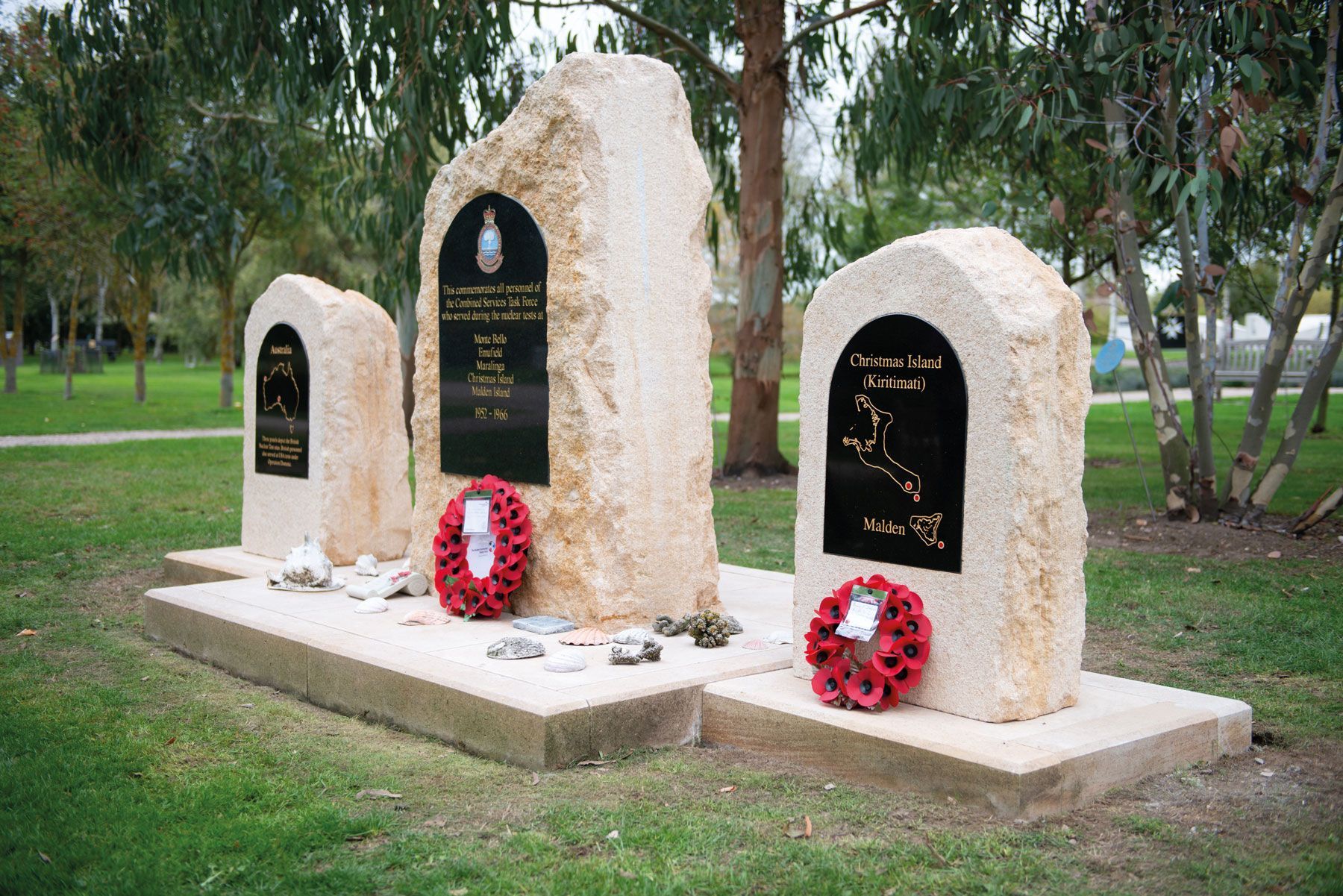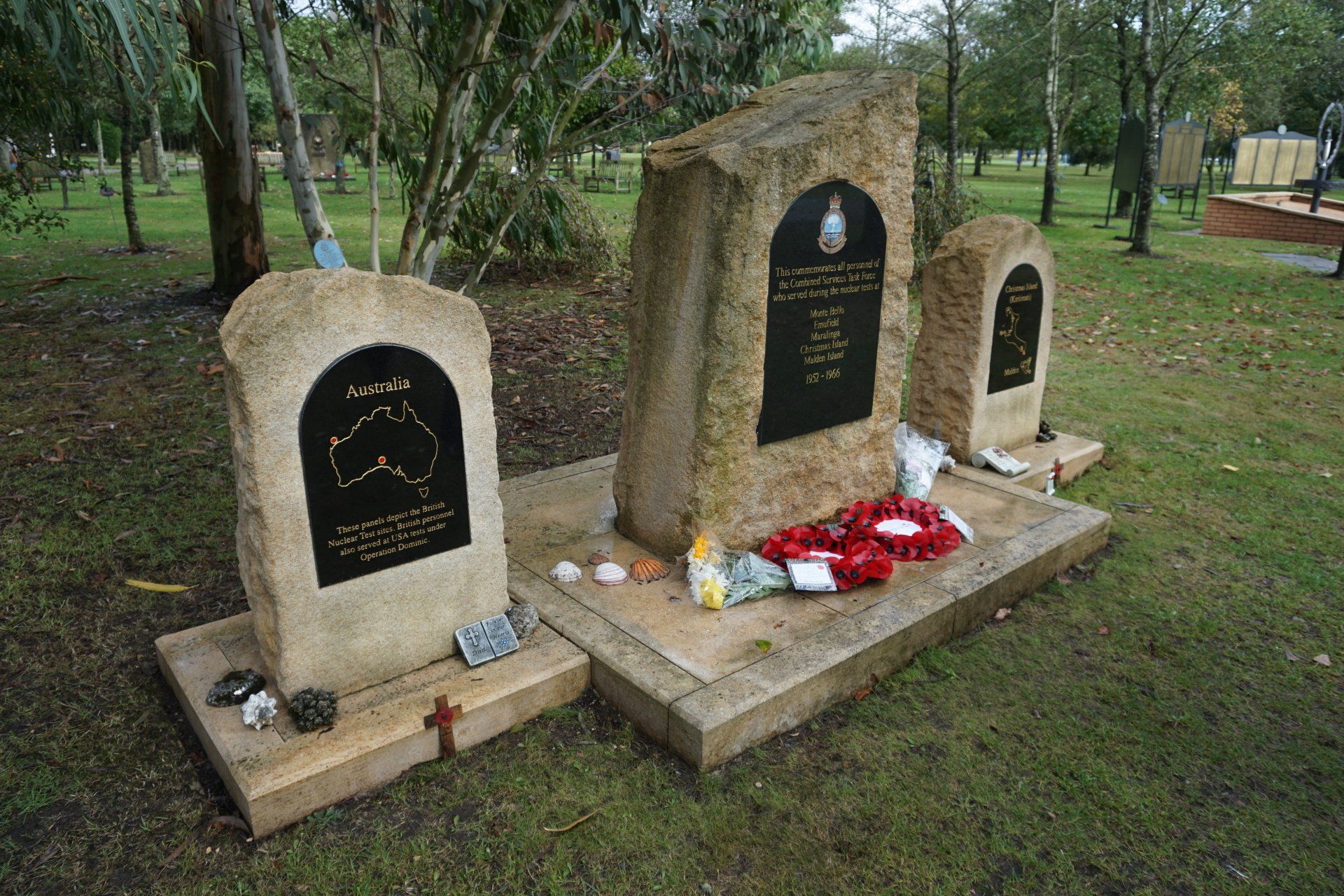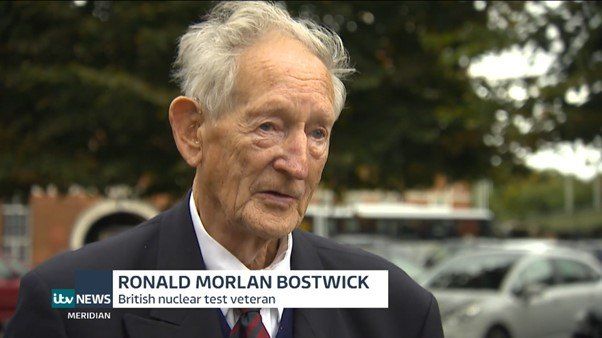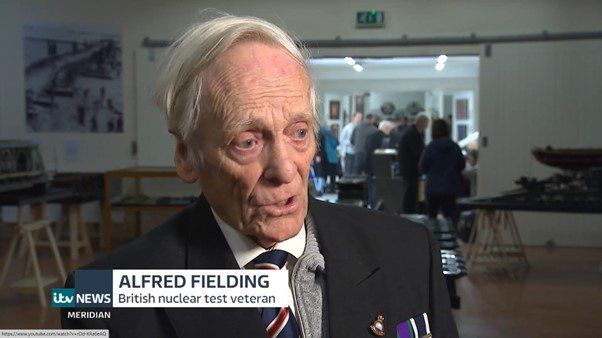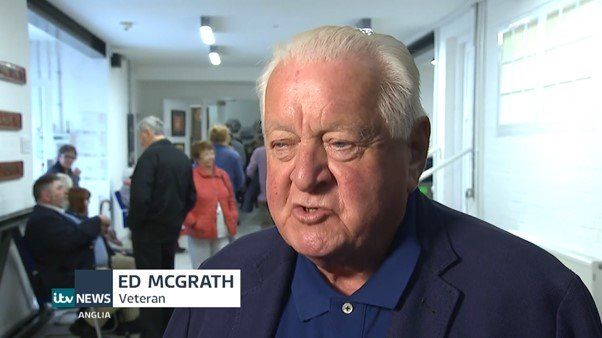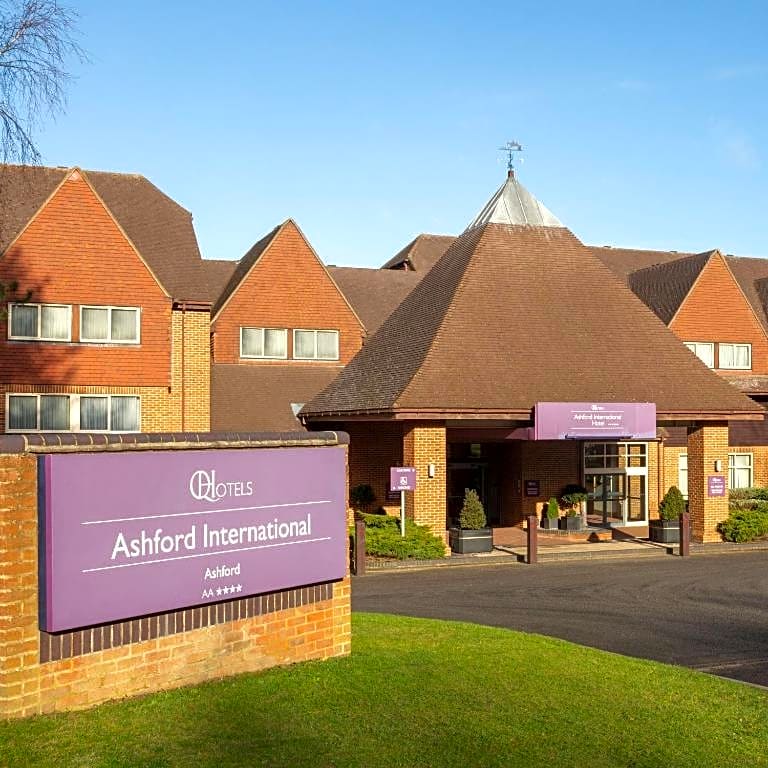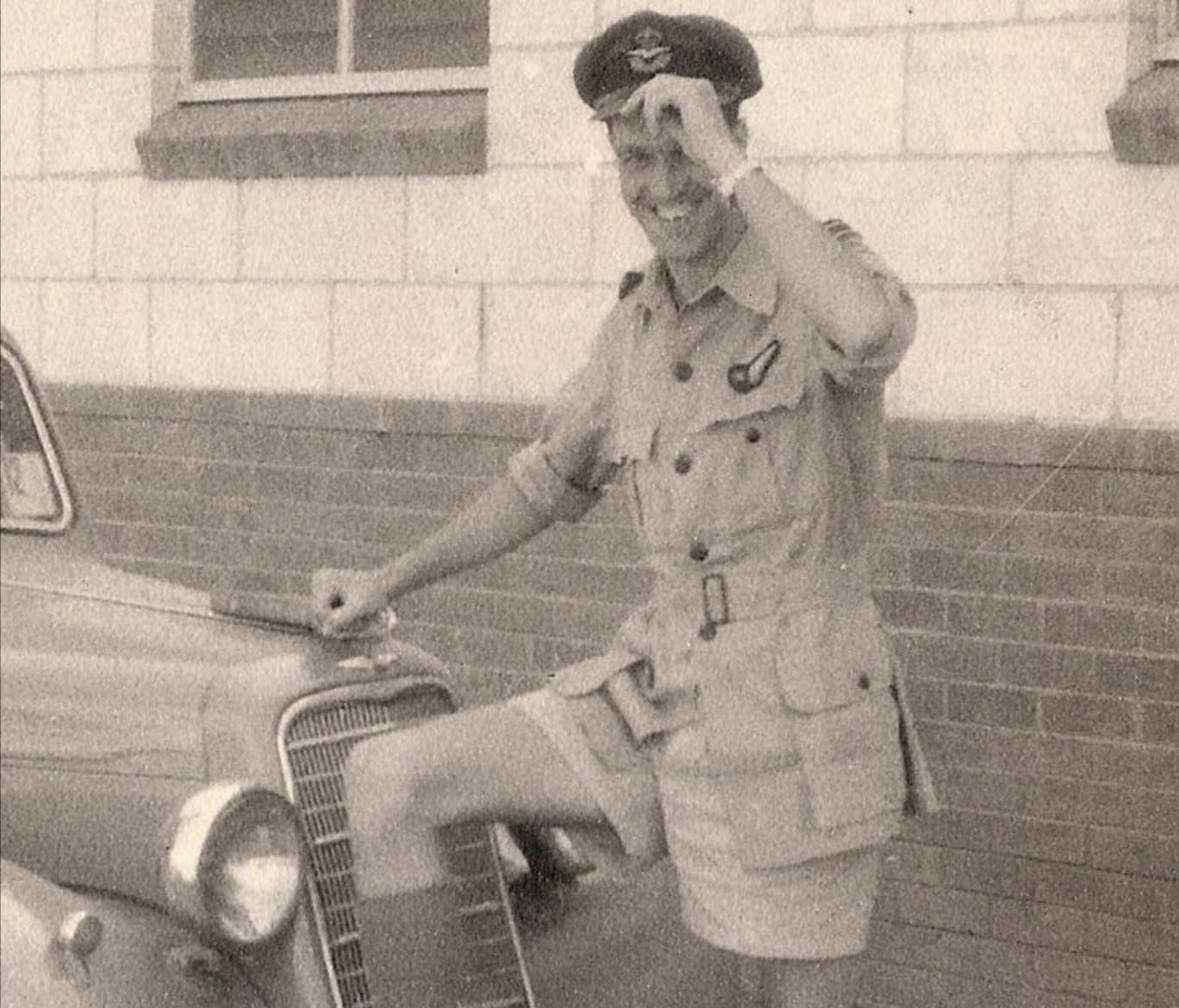A demonstration of risk and rigour?
This blog has been created due to Dr Charles Winstanley's letter to the BNTVA outlining the decision of the Advisory Military Sub-Committee concerning the BNTVA application for a medal for British nuclear test veterans from 1952-1991, submitted in August 2019. There has been much debate within the British nuclear community about the risk and rigour demonstrated within the application. There have been three medal applications by the BNTVA - the first application in 2012 in the Jeff Liddiatt era, this application by Susie Boniface and Alan Owen, and the third application submitted on the 8 June 2021. In fact, risk had been demonstrated in 2013 according to the August minutes of the previous AMSC.
"Further Claims for Medallic Recognition
(Extract from the minutes of the meeting of the Advisory Military Sub-Committee of the Committee on the Grant of Honours, Decorations and Medals held on 29 August 2013)
Jon Thompson – Permanent Secretary MOD – Chairman.
Vice-Admiral Bob Cooling – ex Royal Navy representative.
Major General Nick Cottam – ex Army representative.
Air Vice-Marshal Tony Stables – ex RAF representative.
Sir John Holmes – Adviser to the AMSC.
13. Claim from Servicemen who witnessed the Atmospheric Nuclear Tests in the Pacific in late 1950 and early 1960
This claim is for those servicemen who believe they were exposed to the risk of radiation when serving in the Pacific in the 1950s, when they were involved in helping set up and observe nuclear testing, without being advised properly or consulted.
Comment
There seems little doubt that the servicemen involved in the nuclear tests were not given a proper account of the risks they were running and therefore have a genuine grievance. However the other aspect of the criteria for medallic recognition i.e. rigour, was not there. It is not clear that medallic recognition is the right way for the Government to recognise this risk and there may be other ways for them to do so. Nevertheless there is a case for the review to take a closer look at this, since it is not clear how the issue will be tackled otherwise.
AMSC Recommendation:
Disagree – not for review. The sub-committee felt that this was not the type of operational duty that would normally be recognised by the award of a medal. The sub-committee was mindful that there were ongoing claims for compensation by some of this group of veterans and it would be inappropriate for any medal review to potentially impact upon that."
Below is the medal application written by Susie Boniface on behalf of the BNTVA:
The UK Nuclear Weapons Testing Programme was the biggest, most important and potentially deadly tri-service operation since the D-Day landings. More than 22,000 personnel, many of them on National Service, took part in preparing, detonating, measuring and witnessing the bombs.
This application does not rely on the well-known belief of many veterans that they were irradiated. It is irrelevant to the risk and rigour of their service and their argument for official recognition. But it is important to bear in mind these were experiments, and no-one at the time was sure they would be conducted with success. The chances of something going wrong of a mis-timed explosion, or badly made device, possibly claiming thousands of lives in an instant-were immense.
Such tests could and would never be conducted today. This is not just because of 21st century sensitivities about the environmental or humanitarian impact. Even at the time these tests were conducted, it was against a background of worldwide disapproval, impending testing bans, and the clear knowledge among scientists and the government that radiation carried dreadful risks, of not only death but also genetic mutation, as noted by the Medical Research Council in 1947(see notes). That is why the tests were conducted in the furthest
reaches of the British Empire, rather than in the UK. It is why we wanted such a weapon in the first place.
Indeed, many of the veterans report getting 'Dear John' letters from their girlfriends back at home, terrified any future children would be affected. Whether these fears were well-grounded or not, they existed. The constant peril of Soviet invasion from the Eastern bloc, and of international nuclear war with all the horrors that entailed, were part of the veterans' daily lives both in and out of service.
Despite those risks, and perhaps because of them, the 22,000 men stepped up to do their duty with a valour of a sort that has not been seen before or since. Single, married, in love or in hope of it, they all believed that their country needed them to engage with an invisible, and deadly, enemy. Even today the government insists the nuclear deterrent is necessary simply because of its horrifying ability to extinguish and damage all living things within a vast area. These men went did battle with it.
That is the challenge these men met, with discipline, good grace and willing sacrifice. It was no less risky because they were not being shot at - it was more risky, simply because they were fighting to ensure no-one ever fired such weapons at Britain.
Their service was not an easy one. Engineers built runways on shifting coral sands, maintained generators, built desalination plants. Sailors patrolled vast oceans, RAF mechanics maintained planes, signallers, scientists and officers worked around the clock to do what must be done. Many were not told of their mission before they left port, and many were told after being in theatre for a year that they would need to stay another year to get the job done. That is the job of any serviceman, but in the UK nuclear weapons testing programme it all took place 8,000 miles from home, on a deployment with little if any outside contact, under immense public, governmental and scientific pressure to produce a safe and certain thermonuclear weapon in a hurry. The scientists asked for, and received, extra pay because of the risks they were running. The military personnel did not. They completed their service, in some cases with only an inkling of the risks involved, while wearing most days only
cotton shorts and boots. AWE staff who worked alongside them, meanwhile, wore full radiation protection for the time.
A medal was never an option for work done in such immense secrecy, and which upon their return to the UK was considered by much of the public to be a shameful episode in the nation's history. But in recent years, hitherto unknown facts have emerged about the scale of the risks these men ran. At Monte Bello in 1952, sailors were ordered to sail through fallout to discover the effect on ships and men. They did so twice, for a total of 16 hours, and remained on board that ship – HMS Diana - for a year, diverted on its way back to the UK
in the Suez Crisis. Its captain, John Gower DSC, later said his vessel was still radioactive and asked publicly why it and his crew were never checked after their mission for what he believed would have been militarily - useful data.
At Emu Field and Maralinga the men worked and lived in areas which saw 700 'minor trials' of trigger devices. Eyewitnesses describe "jets of molten, burning plutonium extending hundreds of feet into the air". Op Hercules cleaned up Maralinga in 1964, only for it be done again in Op Brumby three years later when plutonium found on the surface was buried in 22 pits and covered in 650 tons of concrete. In the 1990s, the Australian Radiological Protection and Nuclear Safety Agency spent 5 years burying a further 200,000 cubic metres of topsoil after finding large amounts of plutonium - 239, which has a half - life of 24,000 years. The land was not considered safe enough to be returned to its Aboriginal owners until 2009; how it can therefore be considered to have been safe for thousands of servicemen during these trials, and during the latter, unsuccessful clean-ups, has never been explained.
At Christmas Island MoD records show safety measures observed at earlier, smaller tests were thrown out of the window in Op Grapple to get an H-Bomb before an imminent testing ban. The NRPB health studies report that while 96% of those men at Op Hurricane in 1952 had radiation dose badges, just 3% of those at Grapple Y in 1958 had any checks on their exposure (see notes). The men not only felt at risk, but those who had the responsibility for ensuring they were not exposed to unnecessary danger had stopped checking. There can therefore be no grounds to claim the risk was small or non-existent - no proper assessment was done at the time, and it is clear, from the common-sense perspective of history, the risks were great.
Archive documents have been released that show blood tests, and white blood cell counts, were taken before some of the explosions, but ministers have told Parliament it is not possible to provide the results. Many veterans report missing sections in their medical records. Parliament has heard how veterans told they had no dosimeter record because they did not work with radiation can produce photographs of them wearing such badges. At clean-up operations, and at US tests in Nevada for which British service personnel were provided, there is now clear evidence that officials were aware of risks that men were not adequately protected from, in some cases even by the standards of the day.
In 2009 the MoD admitted on the eve of a court case that around 10% of those who took part were possibly exposed - in sniff planes sent on cloud - sampling missions of both our own and other countries' atomic weapons; of maintenance crew; of Op Buffalo indoctrinees ordered to walk and crawl through fallout to test the ability of uniforms to hold the toxic particles; and on HMS Diana, to name just a few.
Ministry of Defence assertions that most of the men received no 'significant' exposure, and that rules were followed about safe dose limits, has long been made irrelevant by the view of the international scientific community that there is no safe dose for radiation. Any may carry a risk. Any may be significant, to an individual.
And regardless of exposure, the risks themselves carried a cost. Many veterans report symptoms of PTSD, and a University of Southampton study this year found that the many subsequent decades of uncertainty about what, if anything, they were exposed to has led to elevated rates of depression and anxiety not only in the veterans but in their wider families. The psychological damage done not just by the fearful environment, and terrifying explosions, in circumstances no serviceman would today be happy to serve in, has been made immeasurably worse by the long decades of denial and obfuscation by successive governments. This may have been necessary, in terms of national security - it is not, however, principled or humane. It is certainly against the spirit of the Military Covenant, which says that some veterans may deserve special treatment by the state in light of the nature of their service.
There has also been great moral damage done to the veterans, due to not just the valour they showed in the face of ineffable risks but the way in which that service was later considered unworthy of recognition. In 2013, following the Holmes review, their case for a medal was considered for the first time by the previous AMSC. It was decided they should not get a medal while there was ongoing litigation about the claims of ill health. Such litigation had ended a year earlier at the Supreme Court, with no chance of further appeal, which makes this reason for refusal invalid. The only other possibility of litigation would be ongoing war pension claims but as these will likely continue until the last veteran has died, the logic of the 2013 decision, if it hinged on this, would mean a medal would be considered only after no veteran is left alive to receive one.
That same AMSC agreed a medal for the Arctic Convoy veterans, on the basis that President Putin had conferred one on 47 British veterans. A medal of some sort for atomic veterans has been awarded by the governments of the USA, Australia, New Zealand, Russia, France, China, and Canada. They have all, as well as the Isle of Man and Fiji, set up a system of either ex gratia payments, priority healthcare or war pensions for their test veterans. Some of them have even compensated British veterans who are refused such recognition in this country.
For the reasons laid out above, and using the AMSC’s published terms of reference, we submit that there is ample evidence that the issue was not considered properly in 2013. The decision taken was for reasons that had nothing to do with risk or rigour, but with an eye to possible litigation that has never been applied to other cases of medallic recognition. The decision was also inconsistent with recent decisions creating the Arctic Star, the Elizabeth Cross, the Bomber Command clasp, and the Ebola medal. We ask you to agree also that significant evidence has come to light that had not been considered previously. The facts relied upon in 2013 and earlier have now been proven unsound, both by archival documents, official statements, media investigation and scientific research. And there has been a manifestly unfair approach to this particular veteran community. As their service was utterly unique , and not reflected anywhere outside the atomic weapons tests, there can be no sound argument that to honour these veterans would create inconsistencies elsewhere. Indeed, the official treatment of this particular community to date has been to single it out for not being the ‘right’ sort of veteran: with stories people wanted to hear, or wounds people could see. To award them a medal would not only recognise their unquestionable bravery, but would end an inconsistency.
The UK is the last nuclear nation on Earth - with the possible exceptions of Israel and North Korea, about whose weapons programmes little is known - to refuse any form of official state recognition to its atomic veterans. Our request for a medal has long been supported by all political parties. In 2007 Gordon Brown said the country owed the test veterans a debt of honour. In 2011 Liam Fox said it was "time to be seen to do the right thing". Last year Gavin Williamson said it was time "for a fresh look". The chair of the Defence Select Committee, Dr Julian Lewis MP, has also backed our calls for a medal or clasp. Today our patron is Sir John Hayes, Conservative MP for South Holland and The Deepings, and our campaign in Parliament is led jointly by him and Tom Watson, deputy leader of the Labour Party. As a result of their efforts we have received the backing of more than 40 MPs and peers.
We have had immense and long - term support of our claims from the British media, in particular the Daily Mirror, which has reported on our case for 30 years. Last year we got more than 10,000 names backing a medal on an official government petition, and the Mirror produced a dedicated website called DAMNED which has brought us new support from around the world. There is clear public and Parliamentary support for medallic recognition.
A 2007 peer-reviewed genetic study found extensive evidence of DNA damage to test veterans compared to the rest of the population, and an extension to this work looking at whether their reported illnesses are linked to such damage is currently underway at Brunel University. Regardless of what this may prove, it is clear that the long-stated refusal to acknowledge the risk and rigour of the veterans' UK atomic weapons service is no longer a tenable position. The only issue left is whether they showed courage in the face of danger: a question best answered by each of us asking ourselves whether we would turn our faces to the same.
These servicemen played a uniquely dangerous role, unparalleled in UK military history, in creating the nuclear deterrent that has helped to keep the peace ever since. As a nation, we owe them respect and thanks, as well as remorse for their treatment to date. A medal does not in any way support contentious claims about radiation exposure. The risks these men ran existed whether they were exposed or not.
Honouring this truth is simply the decent thing to do. For many of those still struggling with their memories and ill health, most of whom are now in their 80s, a medal would be a dignified nod of thanks from the young Queen they were happy to risk everything for, a simple acknowledgement that what they did for their country is appreciated. It will be the order to finally stand at ease, and cease fighting the enemy they could never see.
NOTES:
ARPANSA report on Maralinga contamination: https://damned.mirror.co.uk/img/docs/maralinga.pdf
Ministerial statements on blood and urine tests:
https://www.parliament.uk/business/publications/written-questions-answers-statements/written-questions-answers/?page=1&max=20&questiontype=AllQuestions&house=commons&member=1463&keywords=blood
HMS Diana:
https://www.telegraph.co.uk/news/uknews/1574676/HMS-Diana-the-ship-that-went-nuclear.html
Hansard report of Parliamentary debate: bit.ly/2HmH3Em
University of Southampton study: https://exposure.press/nuclear-families/
Rowland study: https://pdfs.semanticscholar.org/82b7/8b5961f6e58ba0eb055a50ac9f87c2a3636a.pdf
DAMNED: http://damned.mirror.co.uk/
Parliamentary support:
https://www.mirror.co.uk/news/politics/nuclear-veterans-campaign-jeremy-corbyn-12663472
Please see attached PDFs ‘Catcheside’ for Medical Research Council evidence from 1947
Please see pp 9-12 of attached NRPB analysis for data on dose badge distribution, service personnel, and number of tests served at.
There's just one question. Do you think that this application demonstrated enough risk and rigour to satisfy the AMSC?
